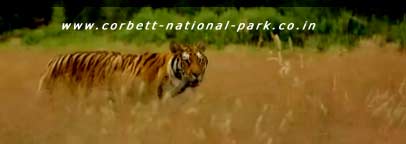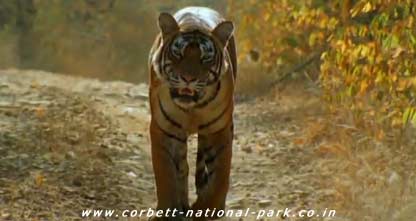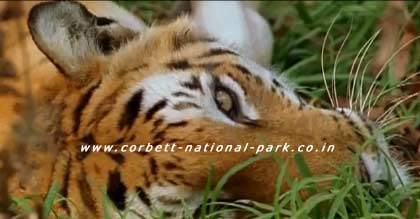 Do's
and Don'ts in the Park
Do's
and Don'ts in the Park :
* Please enter the Jim Corbett National
Park after taking the necessary permits.
* Please accompany a Nature Guide for spotting
the wildlife and the scenic landscapes.
* Drive slowly in the National Park. Enjoy
the elephant and jeep safari but avoid the
disturbance to the wildlife.
* Stick to the known and guided roads and
trails. Driving off track would tamper the
daily activities of animals and the growth
of the trees.
* Maintain a safe distance from the animals
and keep their life undisturbed.
* Please do not put on your car stereo or
transistor. The quieter you are, more is
the possibility of your watching the wildlife.
* Wear less bright clothes as the bright
clothes distract the animals attracting
their attention. or strong perfumes.

* Don't carry gun or a pistol. Feel free
to shoot snaps with a camera.
* Do light campfires or smoke in the forest.
* Don't get off your vehicle at a point
where it is not allowed.
* Keep the park pollution-free and litter
free by disposing off the whole garbage
into the bag provided.
* Consumption of non- vegetarian food and
alcohol is strictly prohibited inside the
national park.
* Never forget to bring your binoculars.
* Do not make any noise. Listen to the silence
and the symphony of the forest. Talk, only
if necessary, in whispers.
* Do not smoke. It is against the law, disturbs
animals and poses a serious fire hazard
to the forest.
* Avoid using a flash while photographing
wildlife. Use naturat light. An animal's
eyes are very sensitive and you will startle
them with a burst of blinding light.

* Do not litter the Park. Carry all your
litter back to the lodge and dispose of
it there, or hand it to the guide/ naturalist,
who will dispose of it properly. Encourage
your guide or naturalist to pick up any
litter that may be lying in the Park.
* During winter, wear sufficient warm clothes
as the temperature in the evening and early
moming may drop below freezing. In summer,
wear a hat and dark glasses, and apply sufficient
mosquito repellent. Drink a lot of water
to avoid dehydration.
* Do not be disappointed if you do not see
a Tiger. They are shy and elusive creatures.
There are a myriad other small, yet beautiful,
rare and interesting animals and birds to
see in the forest.
* While walking on the nature trail, avoid
stepping off the track. By doing so you
are trampling on flowers, bushes and young
saplings and you may disturb nesting birds.
Do not attempt to approach too close to
an animal. Even seemingly harmless animals
can be dangerous if disturbed. Obey the
instructions of your Guide or our naturalist.

* Keep a safe distance from large animals
(30 metres/150 ft- the length of three buses
is recommended.)
* Do not feed them! Feeding attracts animals
to roadside areas where they could be in
danger and creates habituated animals. Feeding
also leads to the animal eating garbage.
Animals eat wrappers, cans, and bottle caps
which spell disaster for their digestion.
Eating human foods can cause, among other
things, tooth decay, gum infections and
ulcers in animals.
* Do not try : Herding animals into a better
scene. Approaching, cornering, following
or chasing them. Throwing objects or calling
out to change behaviour. Direct eye contact,even
through a camera lens can be threatening
to an animal.

* Do not try circling or standing around
an animal by yourself or in a group. Children
should never be encouraged to approach,
pet or feed wildlife.
Always keep children in immediate sight.
They are often the same size as many animal's
prey.

